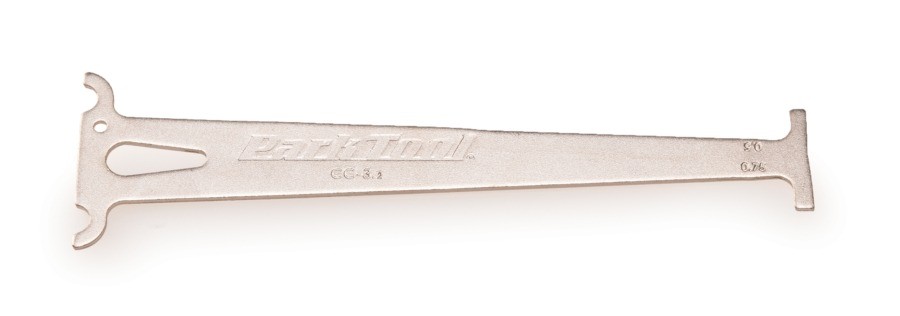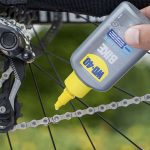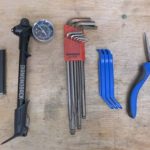As you pile on the miles, your bike’s chain will eventually wear out. The rollers and rivets that make up each link begin to wear down, causing the chain to appear stretched. This wear can cause the chain to match poorly with the rear cogs. A worn-out chain is one of the main causes of poor shifting as it will oftentimes skip over the rear cogs when under load. A worn-out chain will also cause premature wear to the cogs. Since it is far more expensive to replace your cogs than a chain, you can actually save money by learning when to replace your mountain bike chain.
Measuring Chain Wear by Hand
There are a few different methods for measuring chain wear. Some are far more accurate than others. The first method to check chain wear is to simply try and lift the chain off the front chainring. It is important to note that this method is not nearly as accurate as using the proper tools below, but it is a good starting point if you haven’t replaced your chain in a while.
To start, put your bike in a repair stand. This can also be done on the ground if you don’t have a repair stand. Then, you will need to shift to the smallest cog in the rear and the large chainring on the front. Lift the chain off the front chainring with your fingers. If it lifts off to where you can see a lot of daylight between your chain and chainring, you are either going to need to replace your chain or you are getting very close to replacement.
Measuring Chain Wear with a Ruler
Another method for checking chain wear is by measuring it with a ruler. Each rivet on a new chain should be a half-inch apart. This means the 24th rivet should line up with the 12-inch mark exactly. If the 24th rivet comes up short of the 12-inch mark by more than 1/16th of an inch, you should consider replacing your chain. As a note, this method will be more accurate than the last, but more imprecise than using the tools below.
Chain Checkers from Park Tool
The easiest and most accurate way to determine when to replace your mountain bike chain is with a chain tool. The Park Tool CC-3.2 or CC-2 chain checker tools are great options.
CC-3.2 Chain Checker
The first thing you want to do when using the CC-3.2 chain checker is to note which side of the tool has the 0.5% stamp. Next, install the hook end on a link with inner plates to ensure you are measuring against the roller and not the side plates. Attempt to install the other end into the chain. If it doesn’t go in, the chain is not yet 0.5% worn. If it does go in, this tells you that your chain is at least 0.5% worn. In other words, it is 0.5% longer than it was when it was new. The header image shows an example of how to install the CC-3.2 chain checker.
Now switch to the other side of the tool which has the 0.75% stamp. If it does not insert all the way, you know the chain is not yet worn to the 0.75% level. You can tell if it is worn well beyond the 0.75% level if there is some play when you insert this side. If your chain is worn beyond 0.75%, you will likely need to replace your rear cogs at the same time.
CC-2 Chain Checker
Using the CC-2 chain checker, insert the rear stud between two outer plates and the front stud between two inner plates. To be clear, the front stud is the side with the reading window. Push lightly on the lever to take slack out of the chain and feel where it comes to a distinct stop. Don’t force the tool beyond the stopping point. The reading in the window will give you the percent wear of the chain.
What do the Readings Mean?
Anything greater than 0.75% means you should change your chain immediately. You most likely will also need to change your rear cogs as the two wear together and a new chain will likely skip under load. If you are using a chain designed for 10 or fewer gears, you will need to replace your chain as it reaches 0.75% wear. If you are using an 11 or 12-speed chain, you will need to replace your chain as it reaches 0.5% wear. For two sprocket or single speed bikes, replace your chain as it reaches 1% wear.
Remember, using a chain beyond its intended wear limit will prematurely wear out your cogs and chainrings, so staying on top of this routine maintenance task can really save you some hassle and money in the long run. Also, lubricating your chain often will also help prevent premature wear. Check out this post to learn how to lubricate your bike chain.









